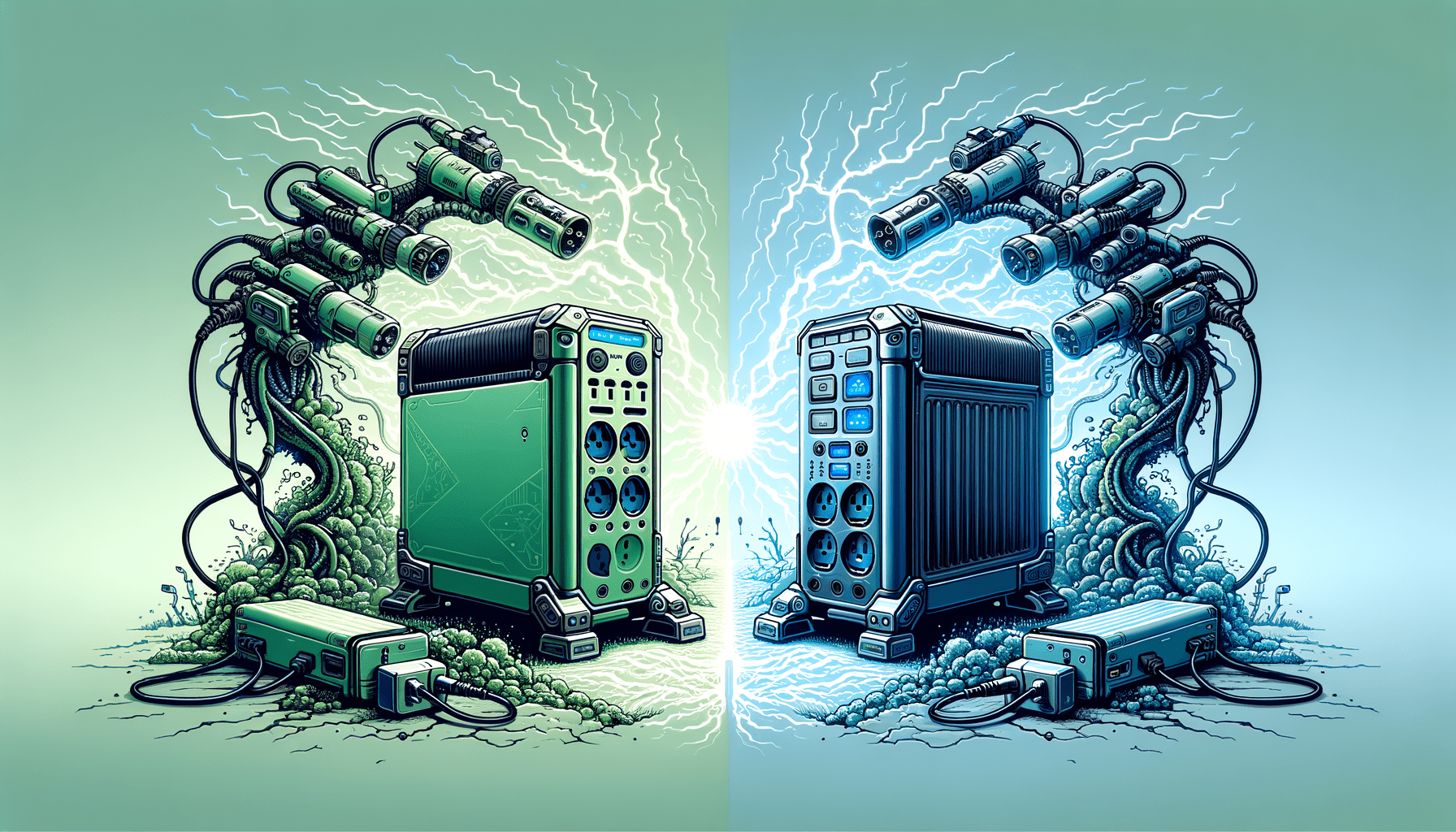When you’re trying to settle on the right portable power station, the number of options can be overwhelming. In the realm of reliable power sources, two models stand out: the Renogy 1000 and the EcoFlow River Mini. Each of these units is designed with specific use cases in mind, but how do they stack up against each other? Let’s dive into a detailed technical comparison of both these powerhouses, so you can decide which is best suited for your needs.
Renogy 1000 vs EcoFlow River Mini: A Head-to-Head Matchup
The Renogy 1000 is designed primarily for those who need a sturdy and powerful unit capable of handling significant power requirements, whereas the EcoFlow River Mini is tailored for those seeking a more lightweight and portable option. Let’s take a closer look at what sets these two apart.
Power and Capacity
Right off the bat, the Renogy 1000 boasts a robust 998Wh battery capacity, significantly more than the EcoFlow River Mini’s 210Wh. This grants the Renogy power station the ability to manage high-consumption devices with ease. For someone looking for a solution to keep more demanding appliances running during camping trips or power outages, the Renogy 1000 is undoubtedly the powerhouse.
Portability and Size
While power is crucial, portability cannot be ignored. The River Mini wins here, given its compact design and lightweight form. Weighing just 6.3lbs and conveniently sized, it’s perfect for carrying in a backpack.
Charging and Solar Compatibility
Both stations offer the flexibility of recharging via solar power. The Renogy can be paired with Renogy’s own solar panels, and the EcoFlow supports up to 100W of solar input. However, the Renogy stands out with its faster solar charging capability and the iTurbo recharge feature.
Power Output and Outlets
The Renogy 1000 excels with 6 Pure Sine Wave AC outlets and a total power output of 2100W, while the EcoFlow River Mini offers a 300W total power output (600W surge) from its Pure Sine Wave AC outlets. The Renogy’s higher power capacity makes it suitable for plugging in more appliances simultaneously.
Battery Life and Safety
The Renogy 1000’s LiFePO4 battery is rated for an impressive 3000 cycles, ensuring longevity. The EcoFlow, on the other hand, promises 80% capacity after 500 cycles. Both models come with advanced BMS systems for comprehensive protection.
Unique Features
The Renogy Power Station has an innovative cooling system and the capacity to power high-demand appliances up to 3000W using iBoost mode. As for the EcoFlow River Mini, it showcases fast charging capabilities and port variety, including exclusive features like USB-C output and wireless charging on the wireless version.
| Feature | Renogy 1000 | EcoFlow River Mini |
|---|---|---|
| Battery Capacity (Wh) | 998 | 210 |
| Weight (lbs/kg) | 41.0 / 18.6 | 6.3 / 2.85 |
| AC Output | 1500W rated (2100W total) | 300W total (600W surge) |
| Cycle Life | 3000 cycles | 80% after 500 cycles |
| Port Variety | 12 outlets | Up to 8 devices |
| Solar Charging | Yes, faster with MPPT | Yes |
| Emergency Power Supply | Yes | No |
| Cooling System | Dual fans | Not specified |
| Special Features | iTurbo, iBoost, SPS | Wireless charging (Wireless version only), Fast charging |
Both the Renogy 1000 and the EcoFlow River Mini have their own areas where they shine. The choice between the two ultimately comes down to your power needs, portability requirements, and which additional features you value.


Conclusion
Deciding between the Renogy 1000 and the EcoFlow River Mini boils down to your lifestyle demands. If you’re a weekend camper needing to charge multiple devices or require a home backup for emergencies, the Renogy 1000’s hefty power output and longer battery life may be the way to go. For those who prize lightweight portability for travel and less strenuous power demands, the EcoFlow River Mini packs a punch in a small package. Whichever you choose, you can rest assured that both will keep your world powered when you need it most.


Leave a Reply